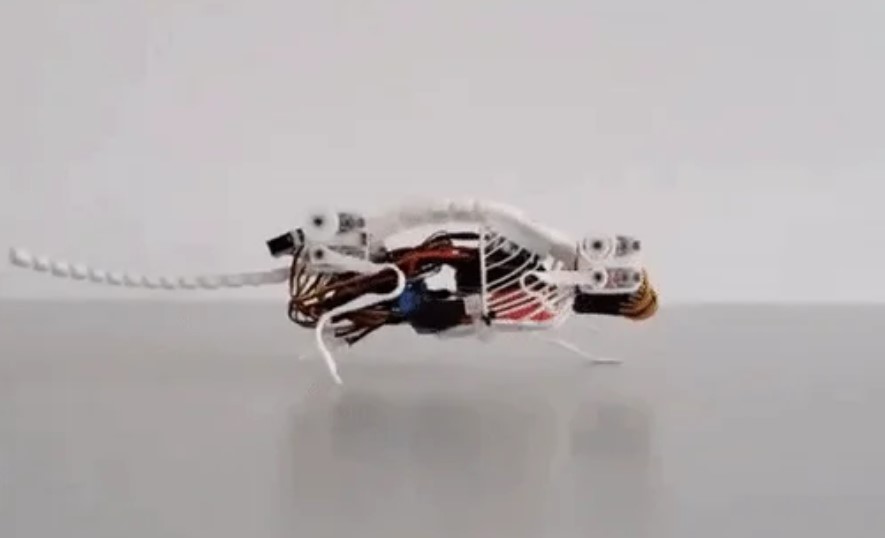
German engineers create a robot mouse with a flexible spine (photo)
Engineers at the Technical University of Munich have developed a robotic mouse with a flexible spine. It increased the speed of the robot mouse and made it more adept at cornering.
According to the engineers, the spine adds flexibility to the robot, making it better able to keep its balance and perform complex maneuvers. So far, the spine has been developed only for mouse-sized robots, but in the future, the approach will be useful for large four-legged robots, the scientists said in an article in Science Robotics.

How the spine helps the robo-mouse
To test how a flexible spine can help robots move, engineers at the Technical University of Munich created a 40-centimeter robotic mouse, named NeRmo. Servos drive its four legs, as well as each of the eight joints in its spine. This allows the mouse’s spine and tail to move up and down and left and right in synchronization, depending on the NeRmo’s movements. When testing how NeRmo overcomes obstacles with its spine motion on and off, scientists noticed that its curvature made the robot mouse run 17 percent faster and turn 30 percent faster. According to the scientists, the same improvements can be expected in larger robots, such as the four-legged Spots from Boston Dynamics, if they are equipped with flexible legs and a flexible spine. Then, engineers say, the robots will be more difficult to control, but they will be more skillful in overcoming obstacles.
In addition to the spine, the tail can help four-legged robots overcome obstacles. Experiments have shown that quadrupedal robots with a tail successfully survive falls from a height, while those without a tail do not.

